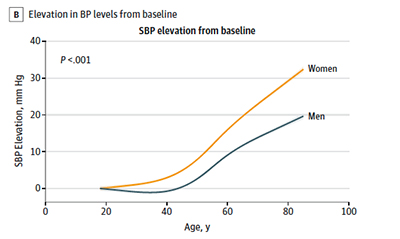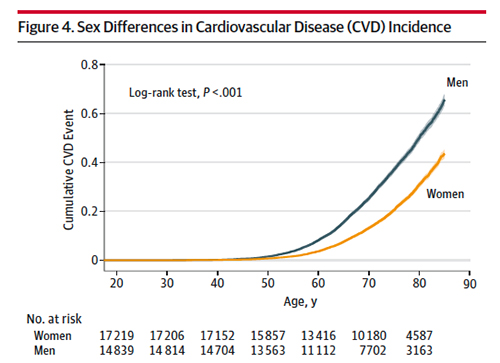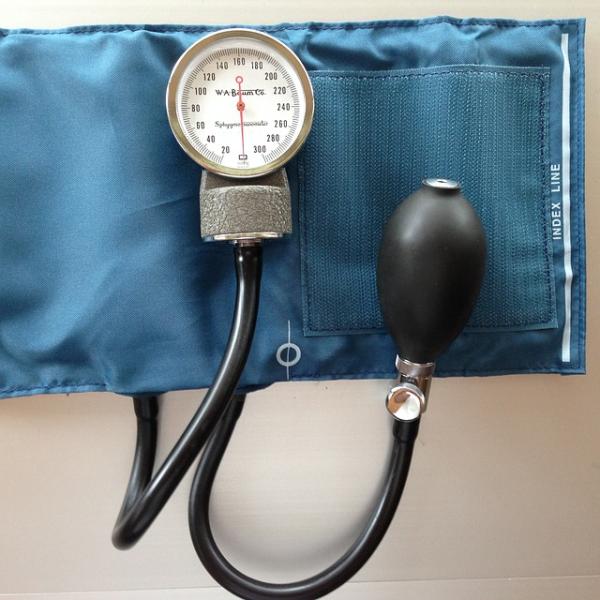“In effect, the broadening clinical experience of managing CVD conditions that manifest differently between women and men, combined with the accumulating data on sex-specific CVD presentations, suggest that cardiovascular pathophysiology is likely to be fundamentally different between the sexes.”
The Study
Researchers made use of 4 community cohort studies on cardiovascular disease providing 144,599 blood pressure measurements from 32,833 individuals (54% women) over a 43 year period spanning the ages 5 to 98.

The graph on the left demonstrates something we have known for a long time, that the onset of hypertension in men occurs earlier than in women. The graph on the right takes those snapshots and calculates the trend and this is what is new. It is not so much that women catch up with men as that their blood pressure elevations accelerate (the slope) in their late 30’s.
 When the researchers adjusted for the usual suspect risk factors, i.e., diabetes, cholesterol, BMI, and smoking the effect was the same, although slightly attenuated.
When the researchers adjusted for the usual suspect risk factors, i.e., diabetes, cholesterol, BMI, and smoking the effect was the same, although slightly attenuated.
This difference in trajectory held true for both the systolic and diastolic blood pressures as well as two calculated values, the pulse pressure which is, in turn, a rough measure of stiffening of the arterial wall; and mean arterial pressure, a rough measure of the thickness of the arterial wall. So conclusion, women have a different physiologic pathway than men.
 During the time course of the study, almost 30% of men and 20% of women had “hard” cardiovascular events, a fatal or non-fatal heart attack, stroke, or heart failure. So other protective or deleterious factors are involved beyond high blood pressure in cardiovascular disease.
During the time course of the study, almost 30% of men and 20% of women had “hard” cardiovascular events, a fatal or non-fatal heart attack, stroke, or heart failure. So other protective or deleterious factors are involved beyond high blood pressure in cardiovascular disease.
What could those factors be?
The most obvious candidates for differences lie in the hormonal milieu and in the differences in the size of the involved organs in women versus men. But there is no clear cut evidence in that regard. The other possibilities lie in the realm of our culture and its effect on gender.
“Importantly, complex social, economic, and structural environmental factors lead to differences in the lived experience between women and men that can also affect physiology as well as vascular biology.”
In the end, we do not know. What we do know with increasing evidence is that in the same way children are not small adults, women are not just “child-bearing” men. While our commonalities may far outweigh our differences, it may well be our differences that set the stage for the expression of disease.
Source: Sex Differences In Blood Pressure Trajectories Over the Life Course JAMA Cardiology DOI: 10.1001/jamacardio.2019.5306




